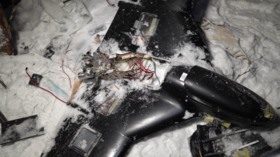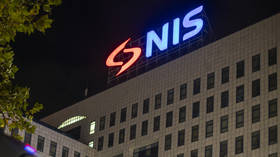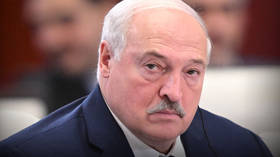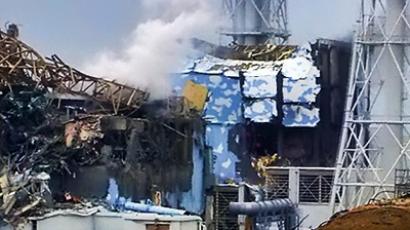All Fukushima-1 reactors to be scrapped – Japanese government
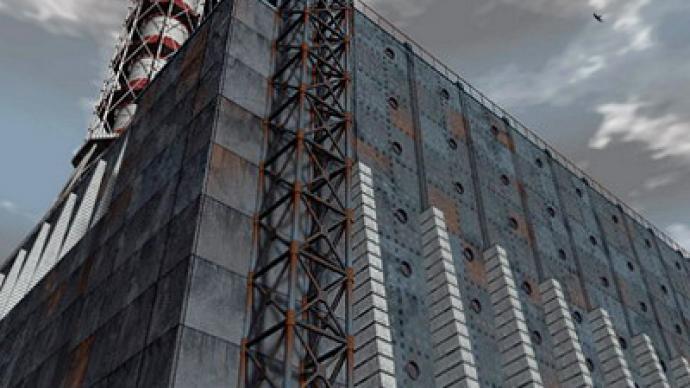
The Japanese government has decided to decommission all six reactors at the damaged Fukushima nuclear power plant. TEPCO is also considering the construction of a containment shell at some of its reactors.
Earlier on Wednesday, Tsunehisa Katsumata, a chairman of TEPCO, said the company saw scrapping its four most troubled reactors as inevitable, Kyodo News reports.However, Yukio Edano, the chief cabinet secretary and top spokesman in the Kan government, went further and suggested that all of the reactors at the Fukushima plant should be scrapped.''It is very clear looking at the social circumstances. That is my perception,” Edano said to a news conference, as quoted by Kyodo News.In addition, TEPCO is planning to cover the damaged units with a special containment shell made of a high-tech fabric. This cover is aimed at preventing radioactive particles from escaping into the atmosphere, Asahi Shimbun newspaper reports.Specialists will first apply a unique compound onto all four reactors, to prevent radioactive particles from escaping into the atmosphere, and then will cover units 1, 3 and 4 with the fabric, to enforce the protection.This decision echoes the steps that Soviet specialists had to undertake in the case of the Chernobyl reactor. It was eventually sealed off within a massive concrete tomb called the sarcophagus. The catastrophe provided valuable lessons in how to deal with a reactor disaster, but also stern warnings about the dangers of nuclear energy.Japanese workers have been unsuccessfully trying to restore the cooling system at the Fukushima facility, in what is now the worst atomic crisis since Chernobyl. The level of radiation measured in seawater near the site, is now said to be around 3,500 times higher than normal.
Professor Christopher Busby, of the European Committee on Radiation Risks, says that what we are witnessing in Japan is even worse than Chernobyl and prabably be an end to nuclear industry worldwide.“I have said right from the beginning that this was a Chernobyl-level disaster,” he said. “I would hope that it means that the nuclear industry is finished. In my opinion, it is going to finish the north of Japan off. I don’t see what they can do about it. They are going to have a very large exclusion zone, and the cost is going to be absolutely phenomenal, so the nuclear industry is finished. But then I thought about Chernobyl and what happened there – there was a massive international cover-up by the nuclear lobby of all the health effects of the Chernobyl accident, which is only coming out now.”
John Large, an independent nuclear consultant, says that Tepco has begun to take control of the Fukushima-1 site, a week after they should have, and now the worldwide community might learn the real scale of the contamination and spread of radiation. “The Japanese believed this cascade from the earthquake and tsunami could never happen, or would happen so infrequently that they did not have to take account of it,” he said. “And as a result they never practiced it, never rehearsed for this type of accident. We saw the Japanese for the first two weeks running around like headless chickens not knowing what to do. The real problem is this: if you take a measure, like flooding the reactor with water, that may only lead to serious consequences later on, when they have all the accumulated water offsite which is highly radioactive. Then you will have to make a decision on how to deal with the water: Will you keep it inside in trenches, or discharge it into the sea with consequences for the marine environment? So, whichever way they turned, they have been ill prepared and they poorly planned for the consequences of their succeeding actions.”The consequences are going to be disastrous if compared to Chernobyl’s tragedy in 1985, Large argues, as Fukushima-1 is a bigger facility than Chernobyl was. Fukushima-1’s crisis involves three reactors, while Chernobyl’s tragedy involved only one. Moreover, Large added, “there were very heavy actions taken by the Soviets at the time to try and control the situation in an ordered way. Here we have disorder and chaos.”


